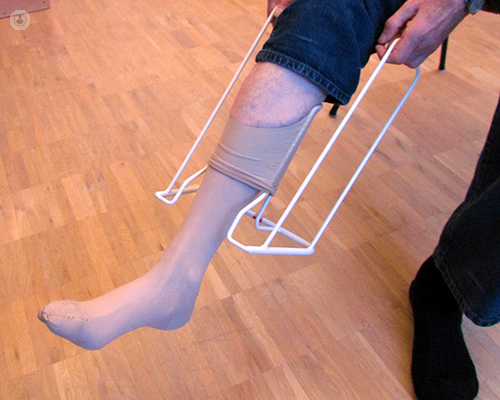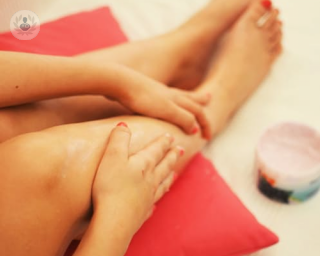Venous insufficiency
Ms Sophie Renton - Vascular surgery
Created on: 11-13-2012
Updated on: 07-19-2023
Edited by: Conor Lynch
What is venous insufficiency?
Veins in your legs have to carry blood back to the heart, and they can do this because the veins have one-way valves that stop the blood from flowing backwards with gravity. However, if you suffer from venous insufficiency, these valves do not function properly and some of the blood remains in your legs which causes the blood to collect in the veins. This can result in pain and swelling, and sometimes leads to ulcers forming on the legs.

What are the symptoms of venous insufficiency?
The symptoms of venous insufficiency are:
- Itching and tingling
- Swelling
- Intense pain (which gets worse when stood upright or when someone is stationary)
- Heaviness or cramping in the legs
- In addition, there are also changes in the skin such as irritated or dry areas if scratched.
- Thickening and hardening of the skin (it can sometimes look leathery).
- Varicose veins
What causes venous insufficiency?
Venous insufficiency is due to malfunctioning vein valves in the legs. These valves can be damaged by blood clots (deep vein thrombosis, DVT). If you do not exercise much, you can be at risk of venous insufficiency.
Other risk factors include:
- People over the age of 50
- Family history of venous insufficiency or DVT
- Being obese
- Being pregnant
- People who sit or stand for long periods of time
Can venous insufficiency be prevented?
The best way to prevent venous insufficiency is to make certain lifestyle changes:
- Losing weight
- Exercising regularly
- Consuming less salt in your diet (this reduces your blood pressure)
- Wearing compression stockings to help the blood in your legs flow better (these are recommended if you have suffered from DVT or had venous trauma).
How can venous insufficiency be treated?
As well as the above lifestyle changes, there are also medical treatments that can be recommended, particularly if these non-surgical measures have not proved successful. The following treatments might be recommended:
- Sclerotherapy
- Ligation (faulty veins are cut and tied off so that blood no longer flows through it)
- Vein repair
- Vein bypass
- Vein transplant
- Endovenous thermal ablation (high-frequency radio waves or lasers are used to close the faulty veins)




